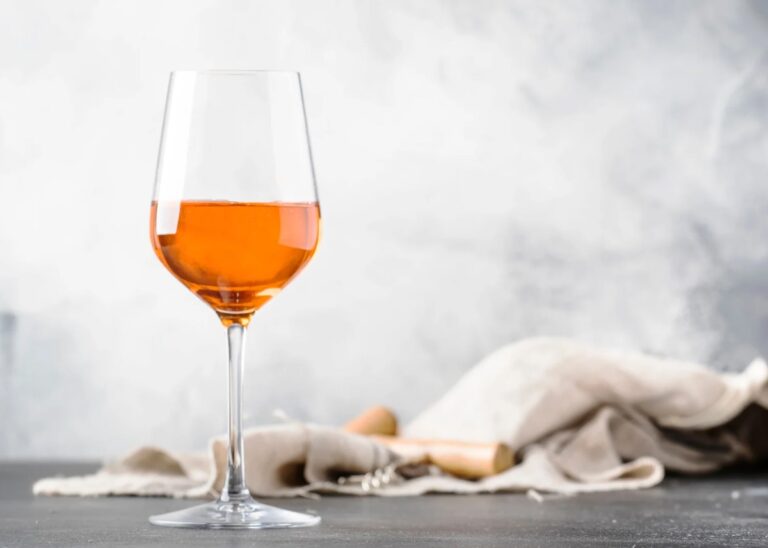[et_pb_section fb_built=”1″ _builder_version=”4.16″ _module_preset=”default” global_colors_info=”{}”][et_pb_row _builder_version=”4.16″ _module_preset=”default” global_colors_info=”{}”][et_pb_column type=”4_4″ _builder_version=”4.16″ _module_preset=”default” global_colors_info=”{}”][et_pb_text _builder_version=”4.26.1″ _module_preset=”default” global_colors_info=”{}”]
In the world of wine, we’re often led to believe that the price tag is the ultimate arbiter of quality. But let me tell you, my fellow wine enthusiasts, that’s a load of fermented grapes. If only life were that simple…
As members of the Bonner Private Wines club, you know we scour the globe for hidden gems from boutique wineries. We bring these wines right to your doorstep, each bottle carrying a unique story. But today, I want to talk about something that goes beyond our curated selections — the perception of wine value.
A few weeks ago, I found myself in a Michelin-starred restaurant perched high in a Seoul skyscraper. The dining room was set up like a UN meeting — a big U-shaped table with a miniature bonsai garden in the center. Our group was a melting pot of nationalities — Finnish, American, Irish, you name it.
The wine list arrived, thick as a novel and about as dramatic. As I flipped through, I saw bottles with price tags that could buy a small car. Bordeaux First Growths, cult Napa cabs, rare vintage Burgundies — the heavy hitters were all there, flaunting their zeros like peacocks with their feathers.
But I’ve never been one to follow the crowd. So when it came time to order, I went rogue. I pointed to a bottle that made the sommelier’s eyebrows do a little dance of surprise.
He approached our table with a bit of a glint in his eye, and what did he pour? The decidedly less fancy Alma de Cattleya 2020 Sauvignon Blanc from Sonoma. Eyebrows raised around the table. “Really?” they asked. Now, this wine wasn’t exactly cheap — at about $150 on the restaurant list, it was roughly five times its retail price. But in a sea of four-figure bottles, it was a comparative bargain.
And you know what? It was perfect. Absolutely, unexpectedly perfect. Crisp, with aromas of lemon zest, it paired beautifully with our meal. That same bottle, plucked from a dusty shelf in a Sonoma convenience store, might not have the same magic. But here, in this tower of glass and steel, thousands of miles from its origin, it’s liquid gold. Why? Because value, my friends, is not just about price. It’s about context, it’s about experience, it’s about the story behind every sip.
[/et_pb_text][et_pb_image src=”https://bonnerprivatewines.com/wp-content/uploads/2024/09/InShot_20240830_145212879.jpg” title_text=”InShot_20240830_145212879″ _builder_version=”4.26.1″ _module_preset=”default” width=”77%” module_alignment=”center” global_colors_info=”{}”][/et_pb_image][et_pb_text _builder_version=”4.26.1″ _module_preset=”default” global_colors_info=”{}”]
Michelin excellence at Eatanic Garden in Seoul
And this is where the art of curation comes into play. From the small store owner who carefully sources wines they can passionately explain and guide customers through, to the Michelin-starred restaurant where every detail is meticulously considered — including that surprising Sonoma sauvignon blanc on the wine list — the value lies not just in the product itself, but in the knowledge, care, and thought put into its selection.
As Oscar Wilde once said, “Nowadays, everyone knows the price of everything and the value of nothing.” And nowhere is this truer than in the world of wine (except maybe the art world, but that’s a whole other can of paint-splattered worms).
We at the club know that wine isn’t just a beverage. It’s a craft. It’s an expression of identity, a snapshot of a particular place and time. The value of wine goes beyond the monetary, seeping into the social, the political, the personal. It’s influenced by time, by economy, by the shifting sands of social values.
Think about it. How much would you pay for a glass of water in the middle of the Sahara? Suddenly, that two-dollar bottle of Aquafina becomes priceless. What about the homemade jam your neighbor brings over every summer, or your mom’s apple pie recipe that’s been passed down for generations? You can’t put a price tag on these things, yet their value is immeasurable. (Unless, of course, you’re planning to sell that secret family recipe to Betty Crocker. Then, by all means, get a good lawyer and name your price.)
The same goes for the bottle of wine you’re holding. It’s the result of countless decisions, of generations of knowledge, of the whims of weather and the peculiarities of terroir.
Maybe it’s from a small vineyard like our own Pucarilla at Ranch Gualfin, where the vines are still tended by hand, where every grape is inspected before it makes it to the press and ends up bottled as Tacana.
Or perhaps it’s from a challenging vintage, where winemakers had to fight tooth and nail against the elements to produce something drinkable. These factors — the labor, the skill, the sheer bloody-mindedness required to make a good wine, all contribute to its value, often in ways that aren’t reflected in the price tag.
When we curate our themed collections, there’s always a story, always a reason. Quality is our foundation — it’s the non-negotiable first step in our selection process. But we don’t stop there. Each bottle is chosen not just for its exceptional taste and craftsmanship, but for the narrative it brings to your table.
This meticulous curation ensures that every shipment is not just a random assortment of good wines, but a thoughtfully crafted experience. Each bottle has earned its place, meeting our high standards for quality and contributing its distinct voice to the overall story we’re telling.
Now, I’m not saying pricing isn’t important — of course it is. For many, it’s a crucial factor. But value? That’s a whole different ball game. Value is subjective, personal, and often intangible. It’s about what speaks to you, what moves you, what makes a moment memorable. It’s the difference between a meal and a dining experience, between a trip and a journey, between a drink and… well, a good time.
Cheers!
Diego Samper
[/et_pb_text][/et_pb_column][/et_pb_row][/et_pb_section]



